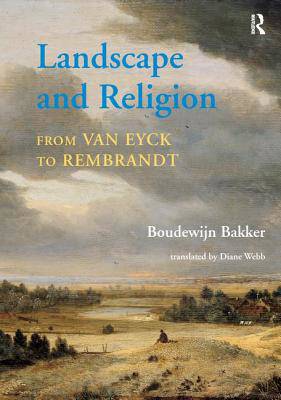
- Afhalen na 1 uur in een winkel met voorraad
- Gratis thuislevering in België vanaf € 30
- Ruim aanbod met 7 miljoen producten
- Afhalen na 1 uur in een winkel met voorraad
- Gratis thuislevering in België vanaf € 30
- Ruim aanbod met 7 miljoen producten
Zoeken
Landscape and Religion from Van Eyck to Rembrandt
Boudewijn Bakker, Translated By Diane Webb
Paperback | Engels
€ 75,95
+ 151 punten
Omschrijving
Offering a corrective to the common scholarly characterization of seventeenth-century Dutch landscape painting as modern, realistic and secularized, Boudewijn Bakker here explores the long history and purpose of landscape in Netherlandish painting. In Bakker's view, early Netherlandish as well as seventeenth-century Dutch painting can be understood only in the context of the intellectual climate of the day. Concentrating on landscape painting as the careful depiction of the visible world, Bakker's analysis takes in the thought of figures seldom consulted by traditional art historians, such as the fifteenth-century philosopher Dionysius the Carthusian, the sixteenth-century religious reformer John Calvin, the geographer Abraham Ortelius and the seventeenth-century poet Constantijn Huygens. Probing their conception of nature as 'the first Book of God' and art as its representation, Bakker identifies a world view that has its roots in the traditional Christian perceptions of God and creation. Landscape and Religion from Van Eyck to Rembrandt imposes a new layer of interpretation on the richly varied landscapes of the great masters. In so doing it adds a new dimension to the insights offered by modern art-historical research. Further, Bakker's explorations of early modern art and literature provide essential background for any student of European intellectual history.
Specificaties
Betrokkenen
- Auteur(s):
- Uitgeverij:
Inhoud
- Aantal bladzijden:
- 396
- Taal:
- Engels
Eigenschappen
- Productcode (EAN):
- 9781138247840
- Verschijningsdatum:
- 14/10/2016
- Uitvoering:
- Paperback
- Formaat:
- Trade paperback (VS)
- Afmetingen:
- 175 mm x 246 mm
- Gewicht:
- 680 g

Alleen bij Standaard Boekhandel
+ 151 punten op je klantenkaart van Standaard Boekhandel
Beoordelingen
We publiceren alleen reviews die voldoen aan de voorwaarden voor reviews. Bekijk onze voorwaarden voor reviews.











